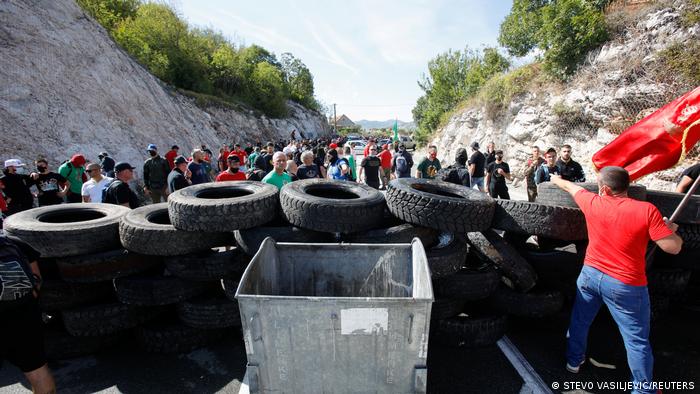
JASON KENNEY CELEBRATES THE BEST SUMMER EVER ™ AT THE CALGARY STAMPEDE IN JULY
Alberta Politics
DAVID CLIMENHAGA
POSTED ON SEPTEMBER 05, 2021
Friday’s jaw-dropping “Kenney Pennies” announcement may have included a few feeble temporary measures to slow surging COVID-19 infection rates and ease the strain on the fraying health care system, but it took less than 24 hours for word to leak the Alberta government has created special exemptions for rodeos.
So while as of yesterday restaurants, cafes, bars, pubs, nightclubs and the like were required to stop serving alcohol at 10 p.m., it turns out rodeo beer gardens will be allowed to go on serving till 2 a.m.

Alberta culture, as imagined by that old Ottawa hand, Mr. Kenney (Photo: Originator not identified).
Yesterday morning, sharp-eyed Facebookers spotted Airdrie Pro Rodeo cheerfully announcing “the Provincial Government has granted us an exception for our FCA Rodeo September 4th & 5th. Therefore beer gardens will carry on as usual and will be open until 2am.”
As this is written, presumably, rodeo goers in the bedroom community of 70,000 north of Calgary, where the full vaccination rate is said to be well under 60 per cent, have lots of time to chug more beers and celebrate the infectious end of Alberta’s Best Summer Ever ™.
Similar exemptions were soon discovered at other Alberta weekend rodeos in Ponoka, Rockyford, and Benalto. This being Alberta, there are likely more.
But that’s just the way we roll here in Wild Rose Country.
If you’re a friend of the United Conservative Party, or better yet a Friend of Kenney (FOK), you don’t have to phone up and beg for an exemption. Someone will phone you.
And if there aren’t any exemptions, restrictions tend to be timed to take place after events the premier wants to happen – and Mr. Kenney loves rodeo. (What’s with that, anyway? Is it because he spent so many years in Ottawa he thinks that’s the real Alberta?)
Indeed, it was Mr. Kenney’s determination to reopen in time for the Calgary Stampede in July that is credited for some of the current Delta-variant-fuelled coronavirus surge that has ICU occupancy at 95 per cent province-wide. And God forbid, as Mr. Kenney put it in Friday’s news conference at which he announced those $100 gift cards for tardy vaccine recipients, that we should ever have to re-close!

Progress Alberta’s Jim Storrie (Photo: David J. Climenhaga).
If you’re not an FOK, it can be a little harder to get permission to break the rules, but not impossible.
CTV Calgary reporter Timm Bruch tweeted last night that Alberta Health “reached out” to Calgary Pride, which had been denied a liquor licence under the new restrictions, to advise them they too had an exemption to serve alcohol into the wee hours last night and tonight.
Needless to say, these exemptions may make political sense, but they don’t make any sense from a public health perspective. Alas, as has become increasingly evident over the past year, the office of Alberta’s chief medical officer of health is now a political office.
As the Progress Report’s Jim Storrie asked yesterday, “You ever hear that bit about how conservatism is all about defining one group that has to obey the law but isn’t protected by it and another group that gets protected by the law but doesn’t have to obey it?”
Well, that’s Alberta in a beer glass.
Meanwhile, COVID infection rates and chronic understaffing has Alberta Health Services so far behind the 8-ball it’s admitted to signing deals with staffing agencies to hire contract nurses from other provinces to address staff shortages in Alberta hospitals.
The admission came in the form of an email to the labour relations director of United Nurses of Alberta, which represents more than 30,000 Alberta nurses, conceding that AHS did intend to hire contract nurses during the fourth wave of the pandemic.
By the way, the email said, AHS will be dropping its August labour board complaint in which it accused the union of bargaining in bad faith by saying AHS was using staffing agencies to hire contract nurses and planning to pay them more than UNA members are paid now.
In its current negotiations with UNA for a new collective agreement, AHS is demanding pay cuts of 3 per cent from every one of its RNs and RPNs!
You’d almost think, at a time like this, it would make more sense to stop trying to cut nurses’ pay and keep making bars close early!
Author of the article: Brodie Thomas
Publishing date: Sep 04, 2021 •

Three rodeos received exemptions from new COVID-19 public health restrictions limiting alcohol sales, not long after those rules were unveiled.
Health Minister Tyler Shandro announced Friday a curfew on liquor sales in licensed establishments after 10 p.m., part of rules and recommendations meant to quell the spread of COVID-19 during this current fourth wave.
Ponoka Mayor Rick Bonnett said the provincial government found his town and others a “grey area” that allowed them to avoid the newly implemented liquor sales limits for its long weekend rodeos.
Bonnett said the Ponoka’s Stampede was already hampered earlier this summer because it was set to take place just before the July 1 reopening. Organizers moved it to the Labour Day long weekend.
“We put together the (event), and here on Friday at noon the government and Alberta Health comes out with the shutdown again, after ticket sales had been done,” he said.
Bonnett said the Saturday night concert following the chuckwagon races is a popular event, and stopping alcohol sales in the middle would not have been ideal.
“I think we’d incite a riot if we told people at 10 o’clock, halfway through a concert, that the bar was closing. I don’t think we want to see what could happen with 3,000 or 4,000 people getting upset.”
Bonnett reached out to his area MLA, Ron Orr, and was told special event licences were not on the order signed by chief medical officer of health Dr. Deena Hinshaw on Friday.
“The cabinet committee obviously was contacted,” said Bonnett. “We are basically going off what Alberta Health said — that they didn’t have special events listed in there.”
But Hinshaw’s order specifically lists “Special Event Licenses” under heading 5.4, noting persons who hold these licences are prohibited from selling liquor after 10 p.m.
In an emailed statement, an Alberta Health spokesperson said selected once-a-year events have been granted a public interest exemption over the course of the pandemic, adding these exemptions are not new.
“Exemptions are granted due to the event’s importance to the local economy and community,” read the statement. “Current exemptions are all for open-air events. Each event is considered individually, and mask requirements continue to apply to any indoor component.”
Alberta Health said three exemptions were granted — for the Ponoka rodeo, the Airdrie Rodeo, and the Cochrane rodeo.
When reached by Postmedia Saturday afternoon, organizers of the Cochrane Lions Club Rodeo said in an email they were not granted an exemption and would be following the new COVID-19 rules.
Two rodeos not mentioned by Alberta Health — Daines Ranch Pro Rodeo near Innisfail and Benalto Agricultural Society’s rodeo — both posted on their Facebook pages they had approval to ignore the 10 p.m. liquor curfew.
Bonnett noted the Ponoka Stampede is a huge event in his town, with many business owners relying on the event to break even in a fiscal year. He also said money from the admission to the Stampede goes back into the community and not-for-profit organizations that provide volunteers to work at the event.
“I’m thankful to the government for at least finding us a grey area for the weekend, and I don’t think anyone wants to be law-breaking citizens here,” said Bonnett.
However, Calgary business owner Chris Hewitt said he’s been left scrambling to cancel or reschedule Calgary Pride events he had planned at his establishment, Dickens Pub.

“We don’t get any exemptions,” said Hewitt. “Nobody is coming to us with these options.”
He said he felt angry and defeated after hearing about the rodeos’ exemptions. He’s also baffled at how they could get their exemptions so quickly.
“Anybody who’s applied for things from the government knows that they do not turn around in the space of a few hours,” said Hewitt.
He feels it was the rush to reopen for another rodeo event — The Calgary Stampede — that has contributed to this fourth wave.
“All the wrong people are getting rewarded all the time for this behaviour,” said Hewitt.

























